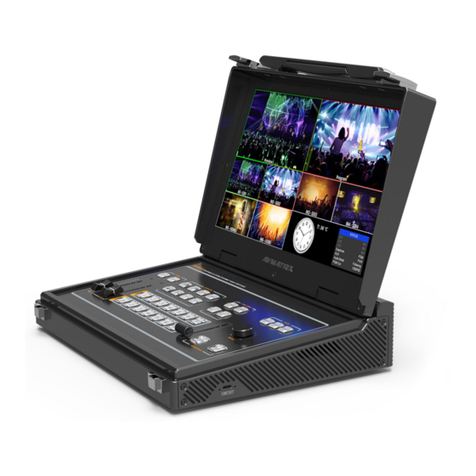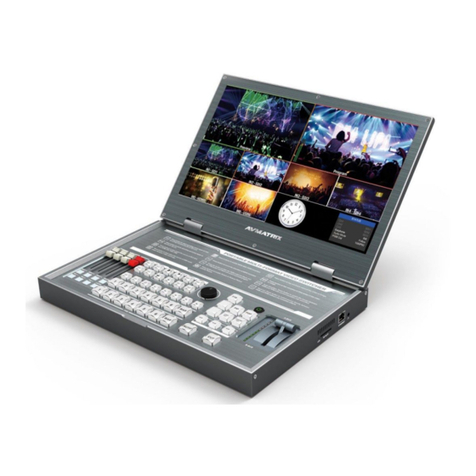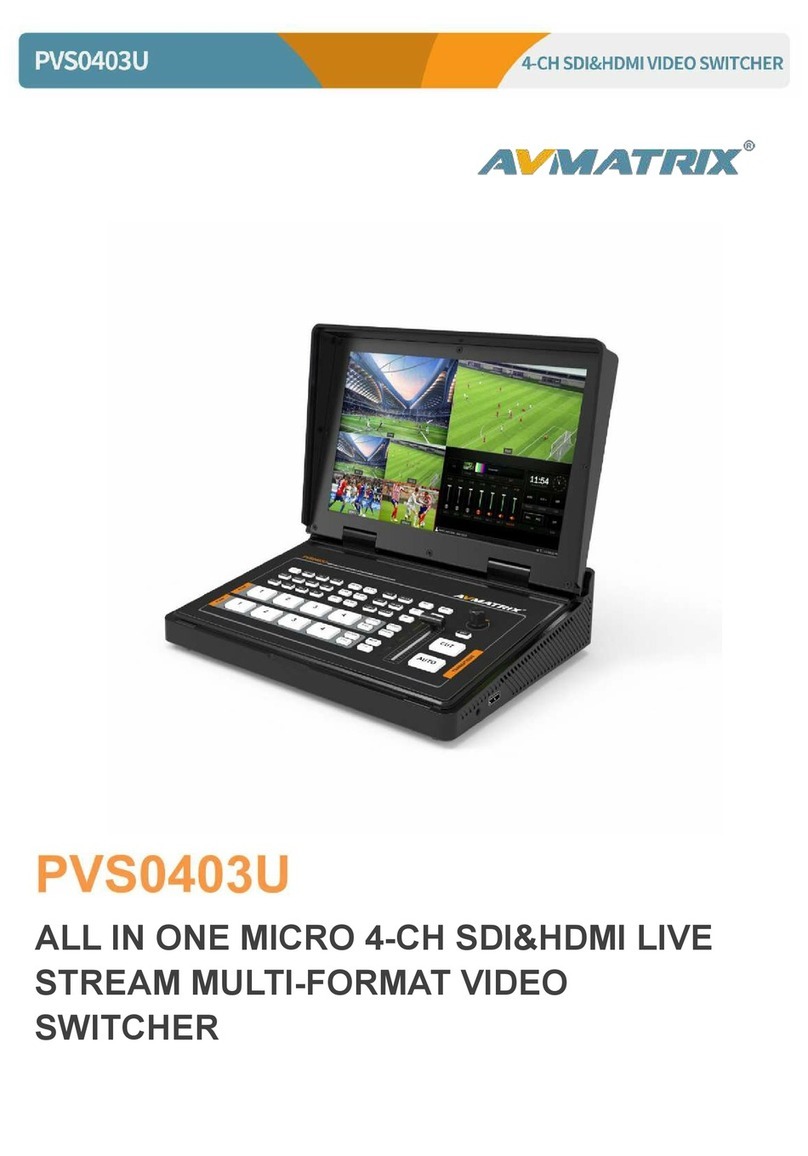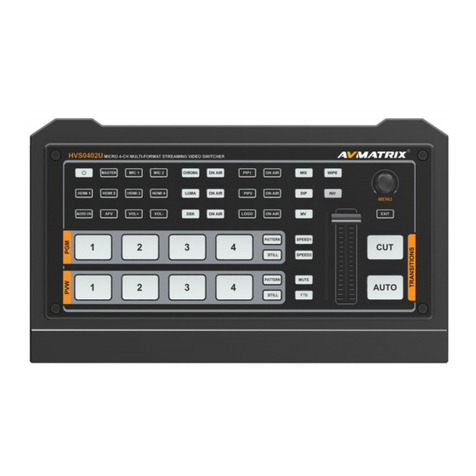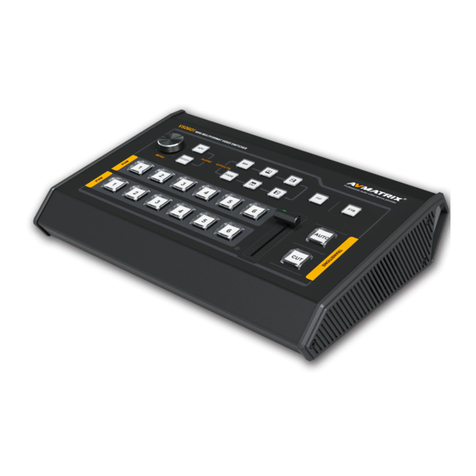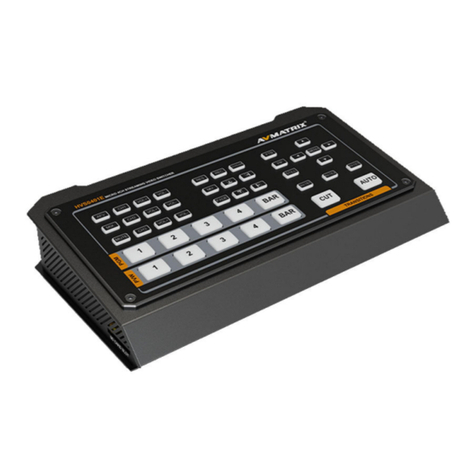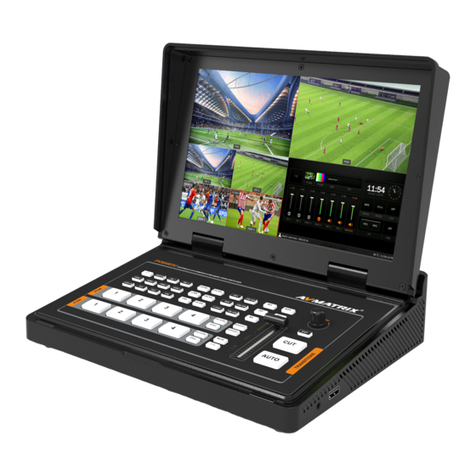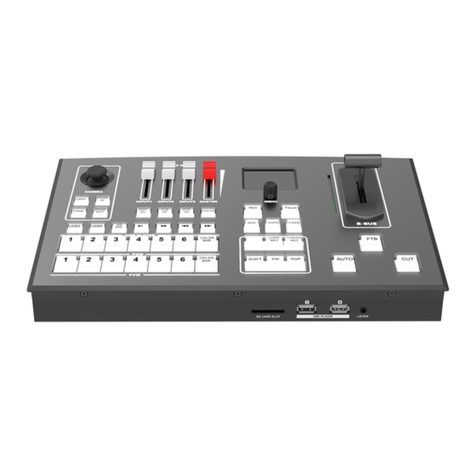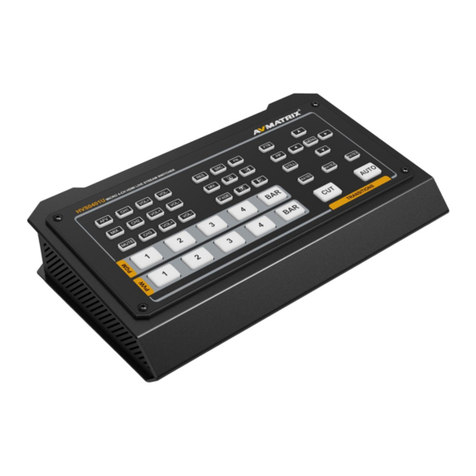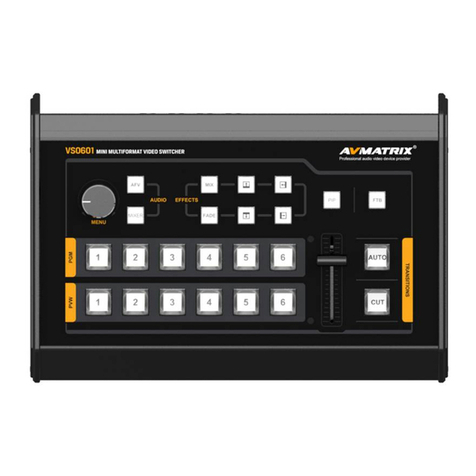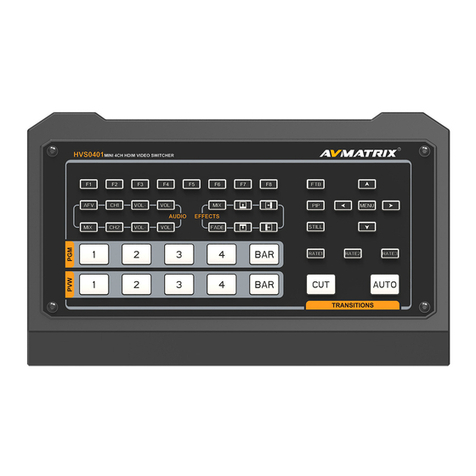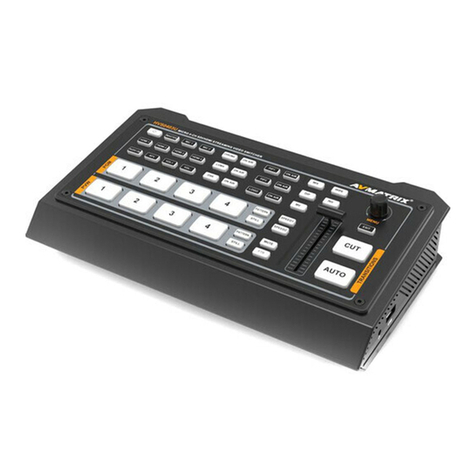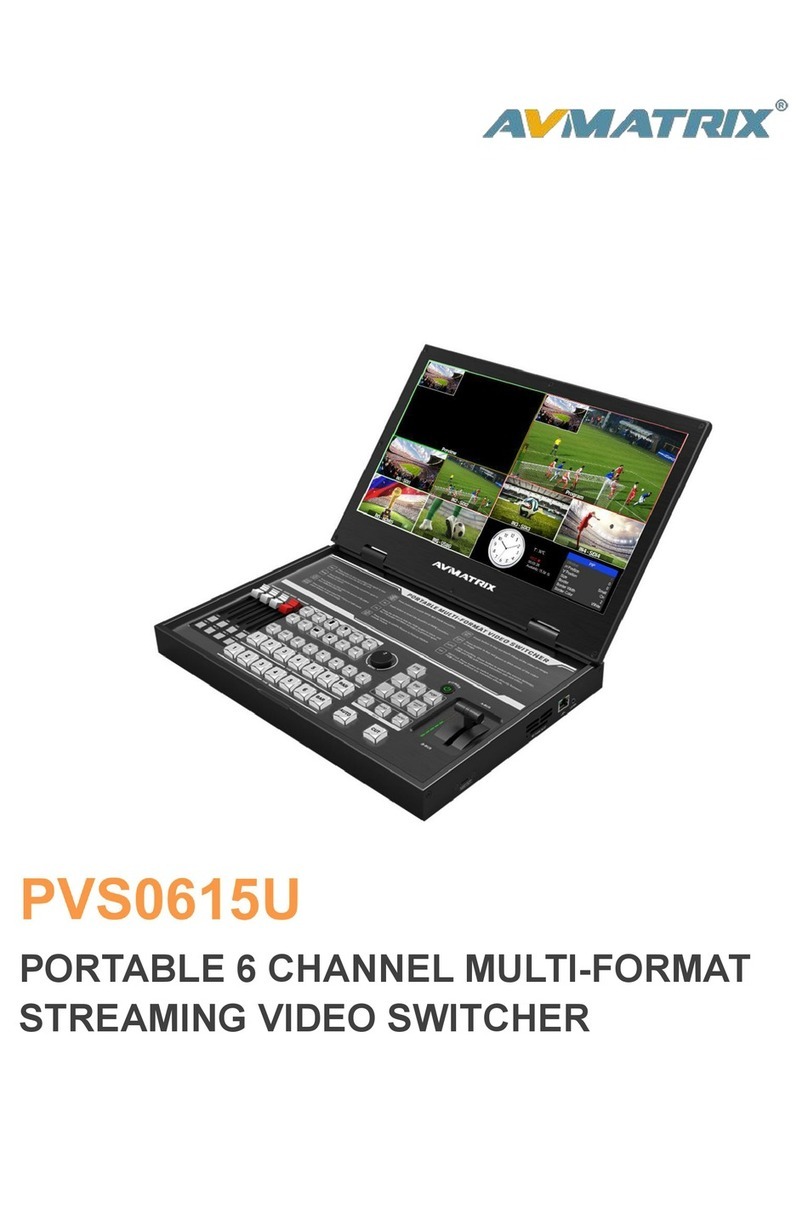
CONTENTS
1. BRIEF INTRODUCTION.............................................................................................................................. 2
1.1. Overview...................................................................................................................................................... 2
1.2. Main Features............................................................................................................................................. 2
2. INTERFACES.................................................................................................................................................3
2.1. Rear Interfaces........................................................................................................................................... 3
2.2. Tally PIN Definition.....................................................................................................................................3
3. SPECIFICATION........................................................................................................................................... 4
4. FRONT CONTROL PANEL......................................................................................................................... 5
5. OPERATION INSTRUCTION...................................................................................................................... 6
5.1. Multiview Output Layout............................................................................................................................ 6
5.2. PGM PVW Switching................................................................................................................................. 7
5.2.1. PGM, PVW Channel Selection............................................................................................................. 7
5.3. Transition Control....................................................................................................................................... 7
5.3.1. FTB (Fade to Black)................................................................................................................................8
5.4. Audio Mixer Setting.................................................................................................................................... 8
5.4.1. Audio Description.................................................................................................................................... 8
5.5. Transition Effects........................................................................................................................................9
5.5.1. MIX Transition..........................................................................................................................................9
5.5.2. WIPE Transition...................................................................................................................................... 9
5.5.3. FADE Transition...................................................................................................................................... 9
6. MENU SETTING..........................................................................................................................................10
6.1. SDI PGM/ AUX and Multiview Output Format.....................................................................................10
6.2. Audio Setting.............................................................................................................................................10
6.2.1. Mixing Mode.......................................................................................................................................... 10
6.2.2. AFV Mode.............................................................................................................................................. 10
6.3. PIP Mode...................................................................................................................................................11
6.4. Main Menu Setting................................................................................................................................... 11
6.4.1. System Settings.................................................................................................................................... 12
6.5. Network Settings...................................................................................................................................... 12
6.5.1. Network.................................................................................................................................................. 12
6.5.2. NetMask................................................................................................................................................. 13
6.5.3. GateWay................................................................................................................................................ 13
